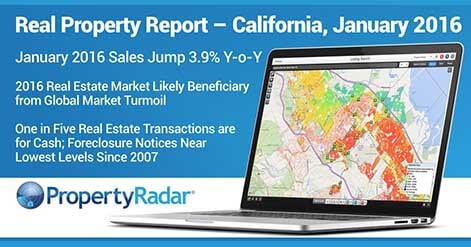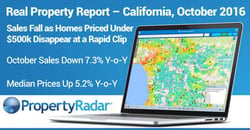Home Services | Mortgage | CA Foreclosure Reports
January 2016 Sales Jump 3.9 Percent Y-o-Y
2016 Real Estate Market Likely Beneficiary of Global Market Turmoil
One in Five Real Estate Transactions are for Cash Foreclosure Notices Near Lowest Levels Since 2007
CALIFORNIA, FEBRUARY 17, 2016 – California single-family home and condominium sales were 24,505 in January 2016, down 29.8 percent from a revised 34,906 in December 2015. The sharp January decline was a typical seasonal fluctuation. On a year-ago basis sales were up 3.9 percent from a revised 23,594 in January 2015. Condominium sales were 19.1 percent of total sales compared to 18.5 percent in January 2015.
“Despite a slowdown in many national economic indicators, California single family home and condominium sales picked up in January 2016,” said Madeline Schnapp, Director of Economic Research for PropertyRadar. “California’s real estate market continues to be resilient. The extreme volatility in the equity markets has precipitated considerable outflows of cash, some of which may be finding its way into California real estate.”
In January 2016, single-family home sales fell 32.0 percent for the month but were up 3.0 percent from January 2015. Condominium sales were down 31.4 percent for the month but gained 7.4 percent year-over-year.
The January 2016 median price of a California home was $400,000, down 2.4 percent from a revised December 2015 price of $410,000. The median price of a condominium was $385,000, down 3.8 percent for the month. On a year-ago basis, median home prices were up 8.1 percent, while condominium prices gained 6.6 percent. Most of the price increases for both single-family residences and condominiums happened during the first four months of 2015. Since April 2015, prices have been trending mostly sideways.
“Affordability has become a significant issue in many coastal counties throughout the state, particularly in the Bay Area,” said Schnapp. “Recent stock market volatility and growing fears about the national economy may send investors scampering to the perceived safety of real estate, putting additional upward pressure on prices.”
January 2016 single-family home and condominium cash sales fell 25.2 percent from December 2015. On a year-ago basis, cash sales were down 9.3 percent from January 2015. Cash sales were 21.5 percent of total sales in January 2016, in line with the average of 21.3 percent over the past six months.
Of the 26 largest counties in California, the counties with the highest percentage of cash sales were Monterey (27.6 percent), Riverside (24.9 percent), San Luis Obispo (24.7 percent), Santa Barbara (27.7 percent) and Tulare (31.7 percent).
“Despite high prices, one in five real estate transactions are for cash,” said Schnapp. “In a zero interest rate environment, which may go negative in the near future, real estate investing remains an attractive alternative in an investment environment starved for yield.”
In other California housing news:
- Flip Sales. In response to seasonal forces, flip sales fell 32.8 percent during the month of January but were up 9.6 percent over the past 12 months. Flip sales peaked in July 2015, coincident with a peak in median prices. Flip sales typically fall in January due to the lack of real estate activity and pick up with the approach of the spring selling season.
- Negative Equity. The number of homeowners in a negative equity position edged lower in January, falling 0.1 percent, or approximately 7,000. Approximately 6.4 percent of homeowners, or nearly 560,000, owed more than their home was worth. To put the current negative equity level in perspective, in January 2015 there were just under one million California homeowners underwater, or one in nine. Today, one in 17 California homeowners are underwater.
- Institutional Investor (LLC and LP entities) Purchases. January 2016 purchases fell 33.4 percent to 877 for the month and were down 20 percent from January 2015. As prices rise institutional investor purchases slow and are down 62.3 percent from their peak in December 2012.
- Trustee Sale purchases by LLC and LPs fell 35.3 percent to 86 for the month but were up 26.5 percent from January 2015. Trustee sales were down 88.0 percent from their October 2012 peak but have trended mostly sideways since May 2014.
- Institutional Investor sales fell 30.5 percent for the month and were down 19.6 percent from January 2015. Investor sales have been on a downward trend since reaching a peak in December 2012.
- Foreclosure Notices and Sales. In January 2016, Foreclosure Notices of Default gained 1.7 from December 2015 but are down 14 percent from January 2015. Meanwhile, Notices of Trustee Sale fell 9.1 percent for the month and are down 11.4 percent for the year. Both Notices of Default and Notices of Trustee Sale are near their lowest levels in our records dating back to January 2007. Foreclosure sales were up 9.5 percent for the month, but down 18.8 percent in the past twelve months.
Home Sales
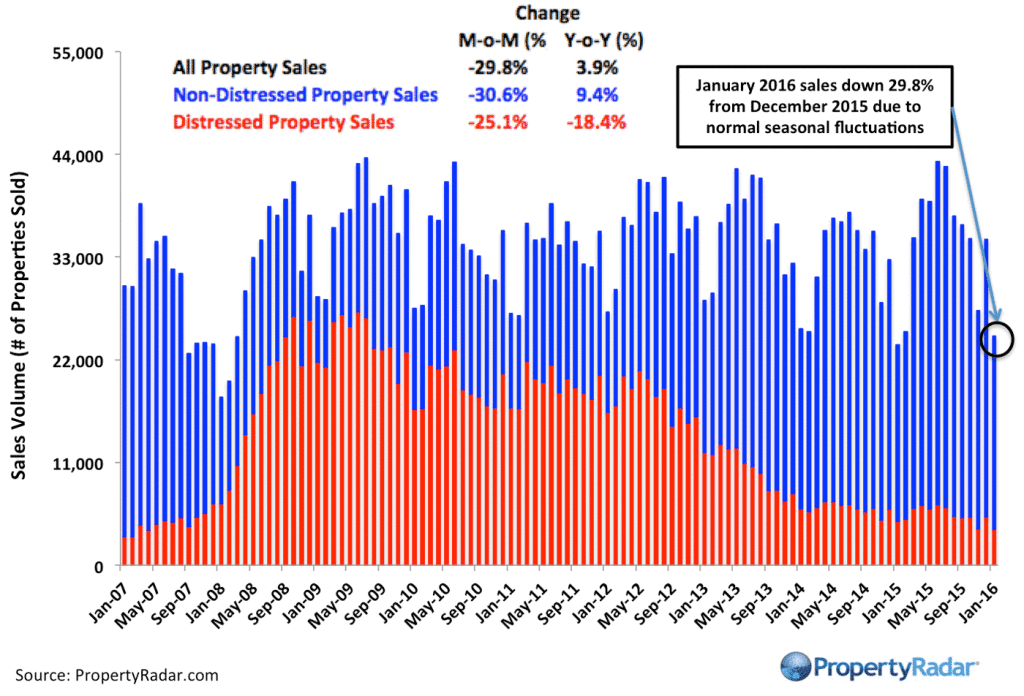
real estate market[/caption]Home Sales - Single-family residence and condominium sales by month from 2007 to current divided into distressed and non-distressed sales. Distressed sales are the sum of short sales, where the home is sold for less than the amount owed, and REO sales, where banks resell homes that they took ownership of after foreclosure. All other sales are considered non-distressed.
Year-over-Year Home Sales
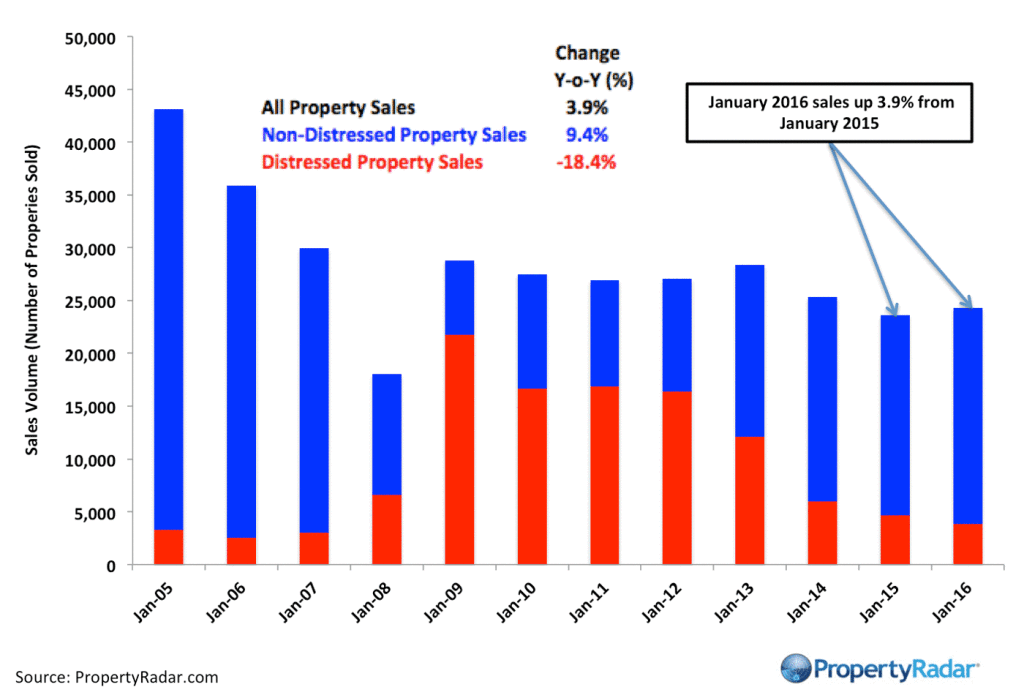
real estate market[/caption]Year-over-Year Home Sales Year-over-Year Home Sales - Single-family residences and condominiums sold during the same month for the current year and prior years divided into distressed and non-distressed sales.
Median Sales Prices vs. Sales Volume
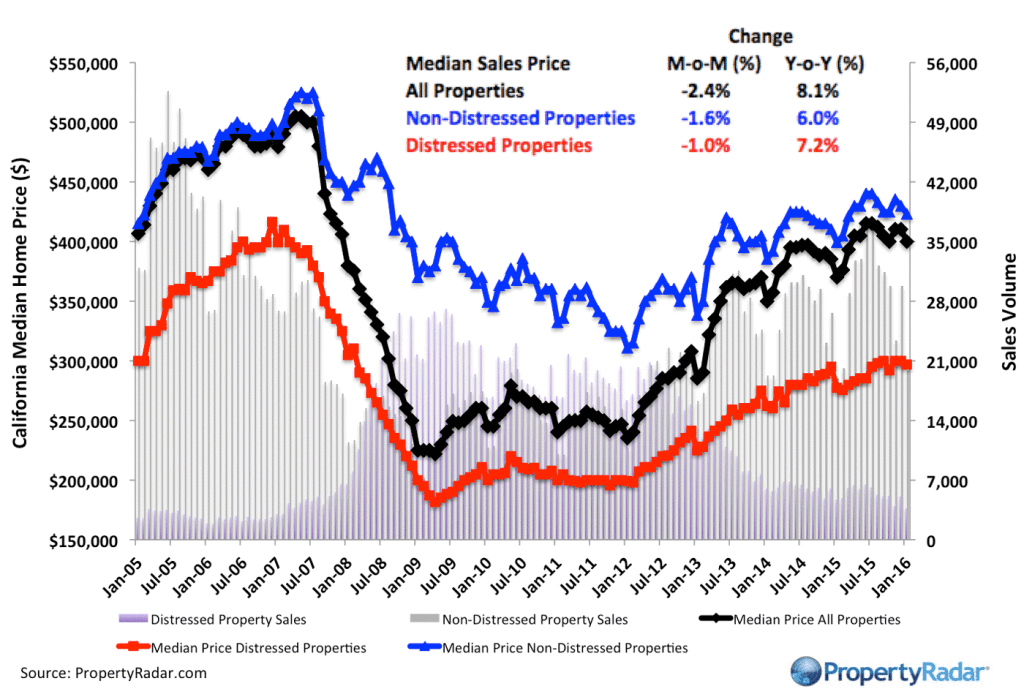
Median Sales Price vs. Sales Volume - Median sales price (left axis) of a California single family home versus sales volume (right axis), by month from 2012 to current. Median sales prices are divided into three categories: All single-family homes (black line), distressed properties (red line), and non-distressed properties (blue line). Monthly sales volumes (right axis) are illustrated as gray and lavender bars. The gray bars are distressed sales and the lavender bars are non-distressed sales.
California Homeowner Equity
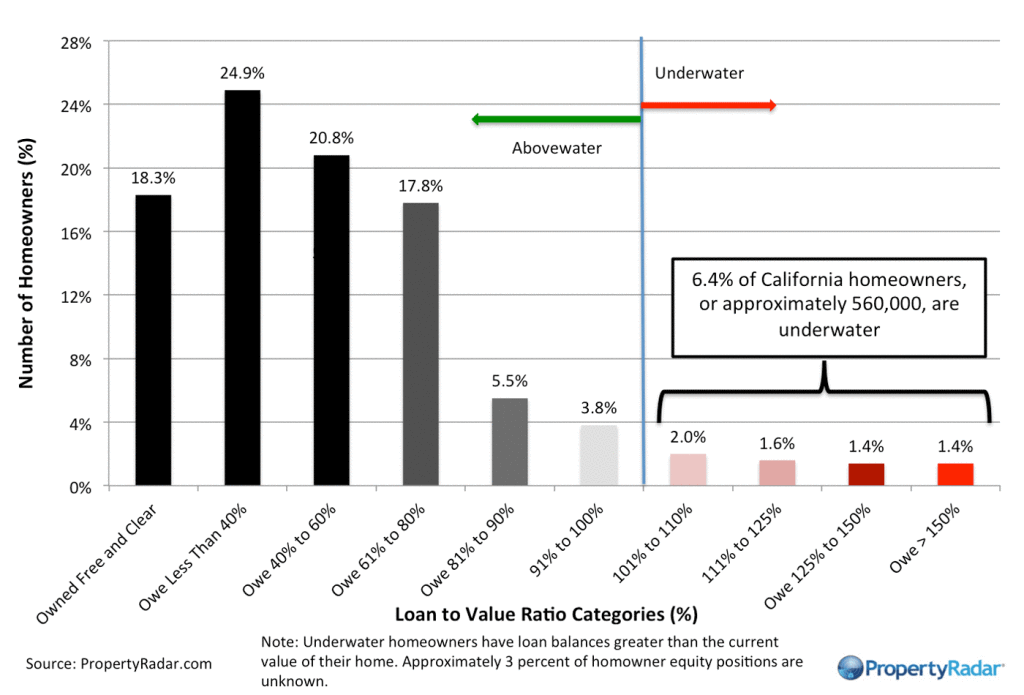
California Home Owner Equity - A model estimate of California homeowners segregated into various categories of levels of homeowner equity for a given month. Homeowner numbers represent a percentage of total California homeowners.
Cash Sales
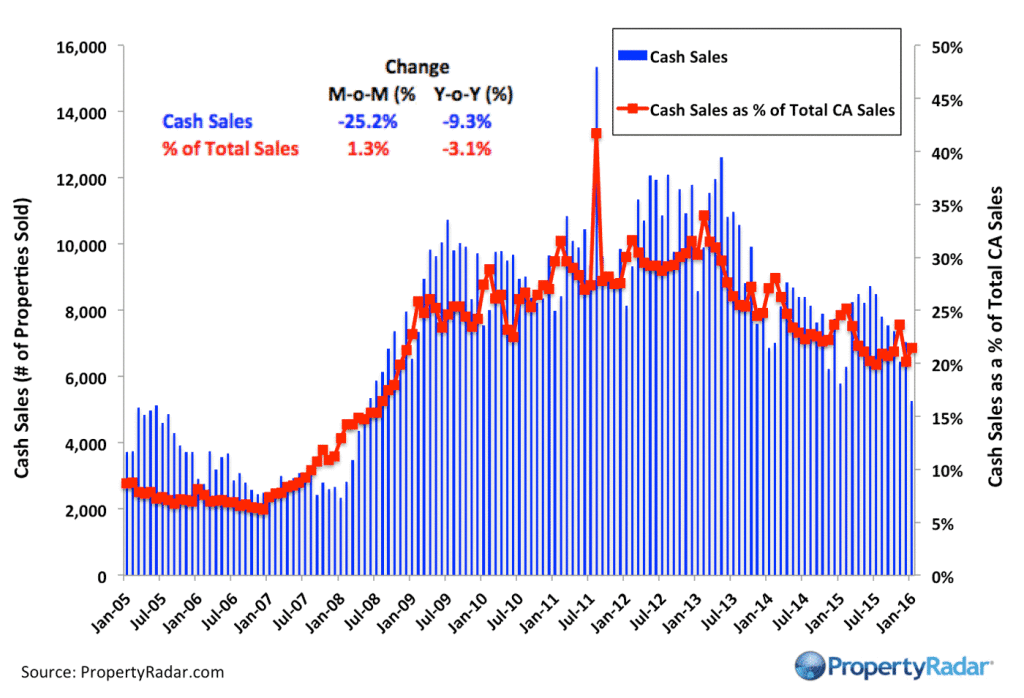
Cash Sales - The blue bars (right axis) illustrate cash sales of single-family residences and condominiums by month. The red line (left axis) illustrates cash sales as a percentage of total sales by month.
Flipping
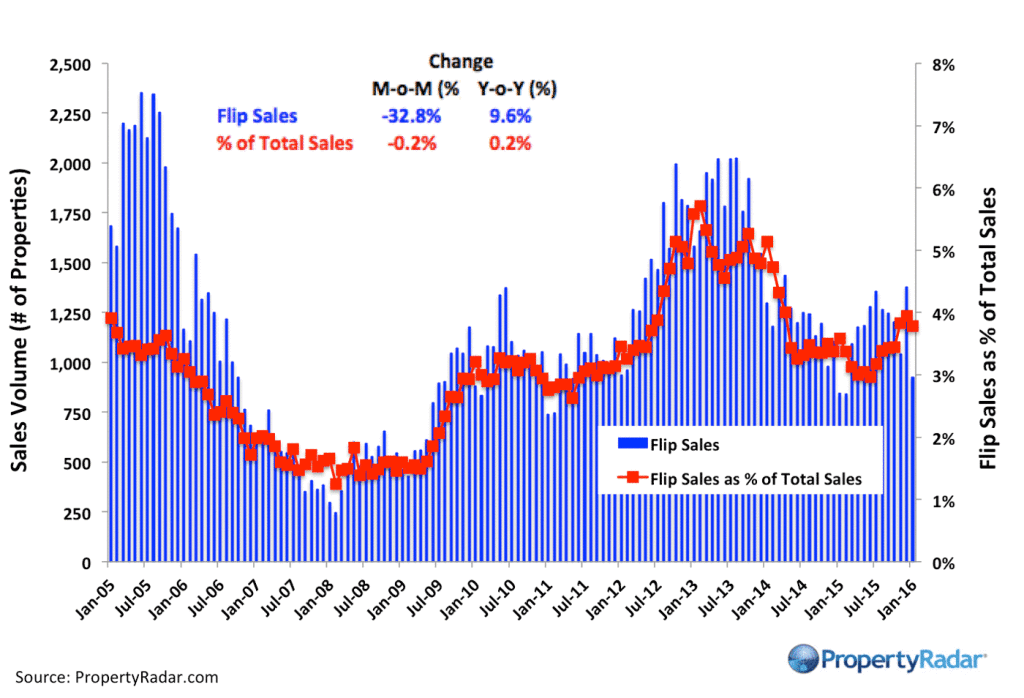
Flipping – The number of single-family residences and condominiums resold within six months.
Market Purchases by LLCs and LPs
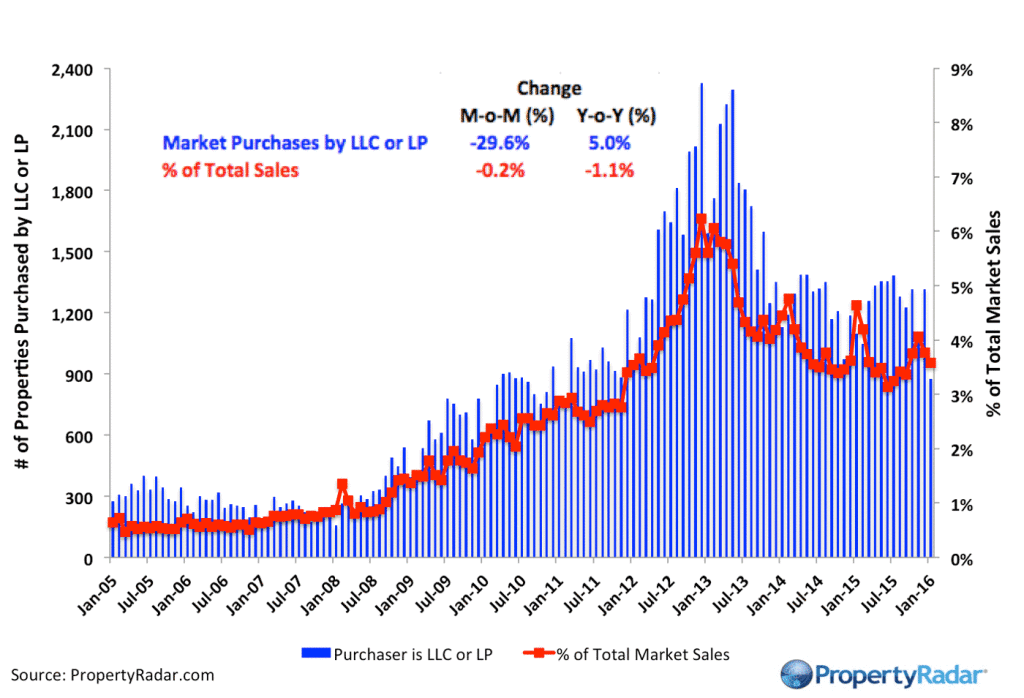
Market Purchases by LLCs and LPs - The blue bars (right axis) illustrate market purchases of single-family residences and condominiums by LLCs and LPs from 2007 to current. The red line graph (left axis) illustrates LLC and LP purchases as a percentage of total sales by month.
Market Sales by LLCs and LPs
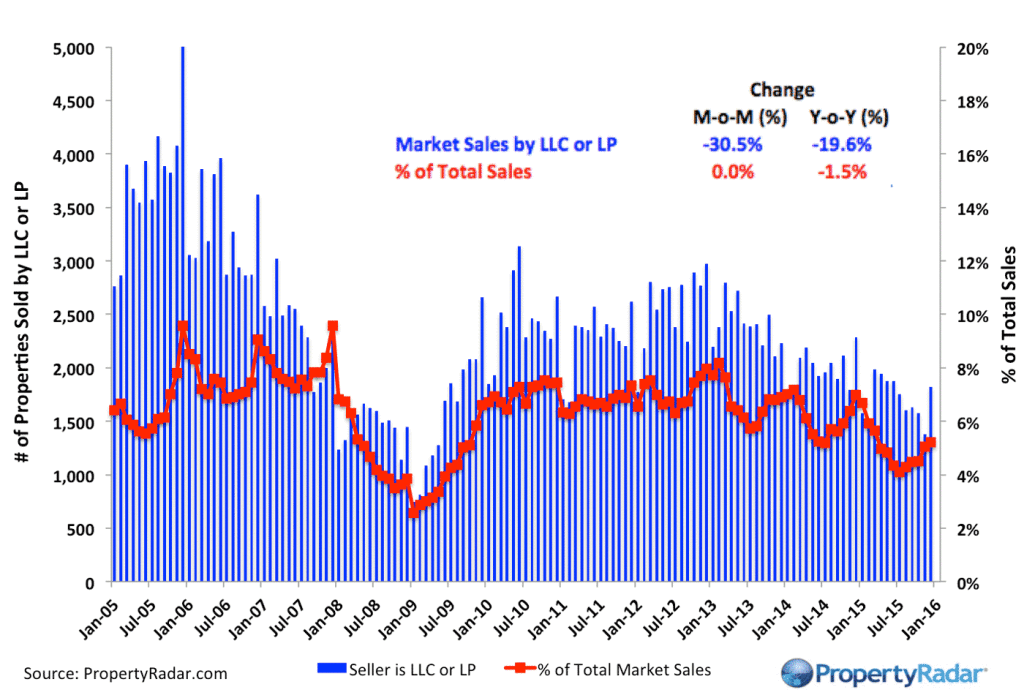
Market Sales by LLCs and LPs - The blue bars (right axis) illustrate market sales by LLCs and LPs of single-family residences and condominiums by month. The red line graph (left axis) illustrates sales as a percentage of total sales by month.
Trustee Sale Purchases by LLCs and LPs
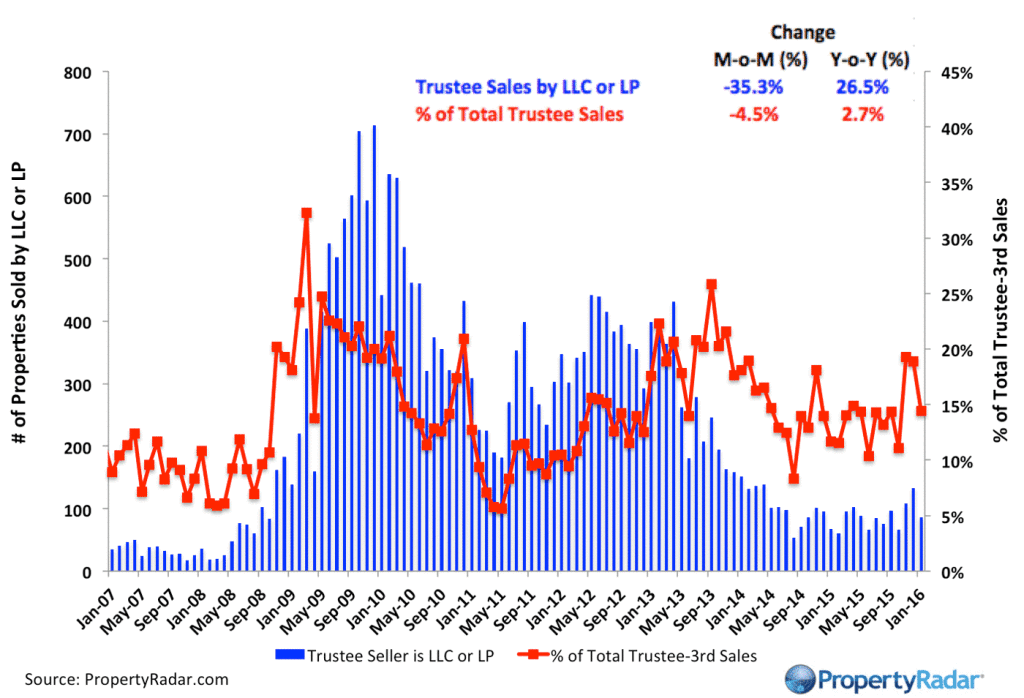
Trustee Sale Purchases by LLCs and LPs - The blue bars (right axis) illustrate trustee sale purchases (foreclosure sales) of single-family residences and condominiums by LLCs and LPs from 2007 to current. The red line graph (left axis) illustrates purchases as a percentage of total trustee sales by month.
Foreclosure Notices and Sales
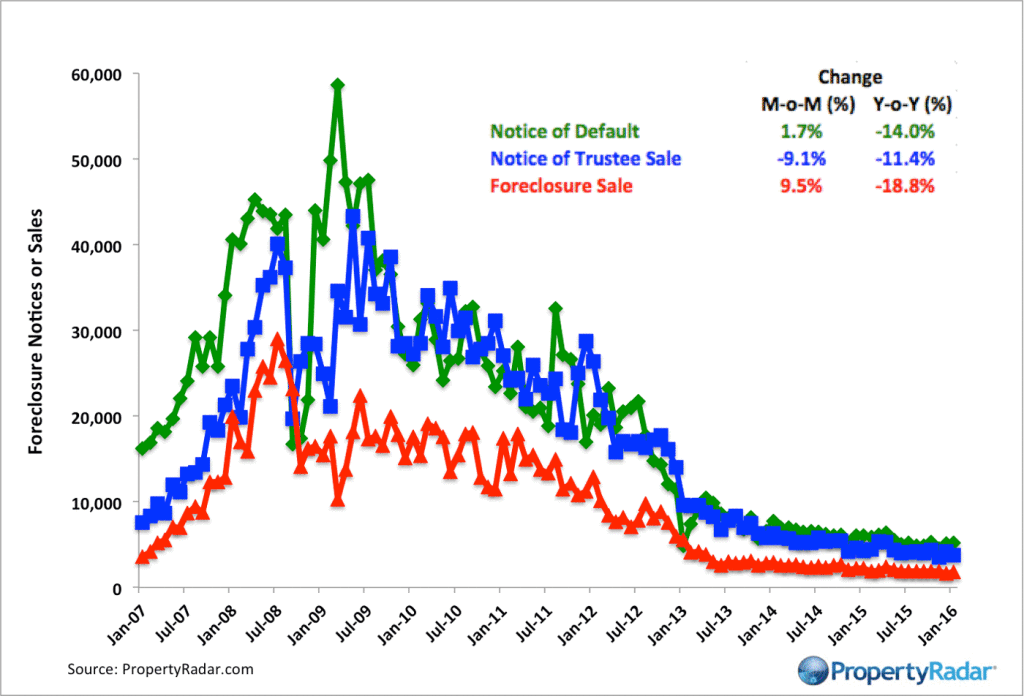
Foreclosure Notices and Sales - Properties that have received foreclosure notices — Notice of Default (green) or Notice of Trustee Sale (blue) — or have been sold at a foreclosure auction (red) by month.
Foreclosure Inventories
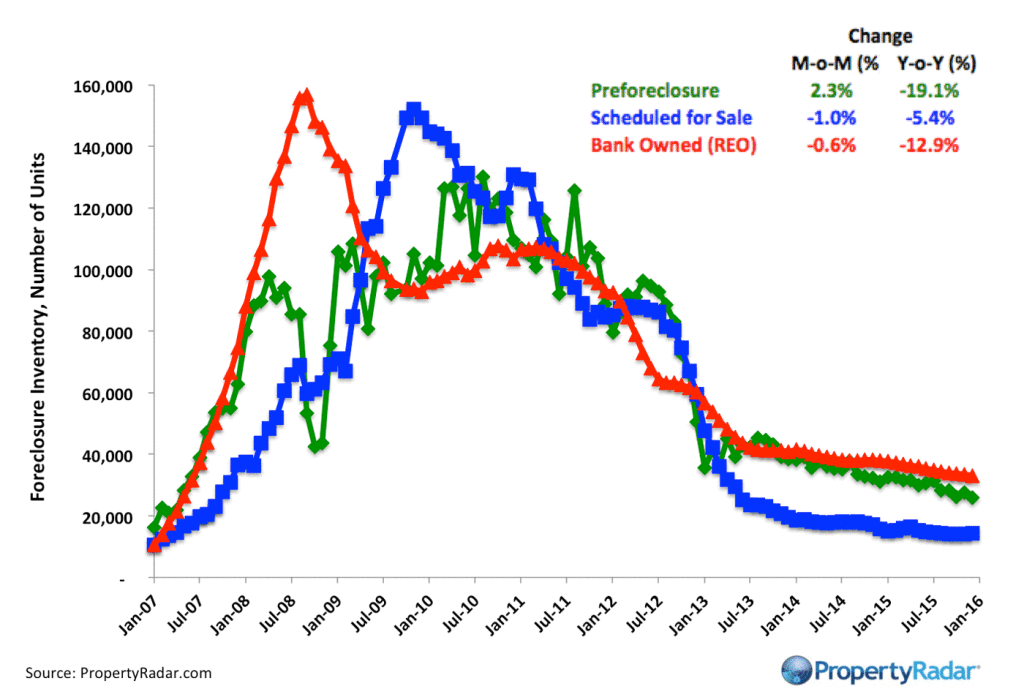
Foreclosure Inventory - Preforeclosure inventory estimates the number of properties that have had a Notice of Default filed against them but have not been Scheduled for Sale, by month. Scheduled for Sale inventory represents properties that have had a Notice of Trustee Sale filed but have not yet been sold or had the sale cancelled, by month. Bank-Owned (REO) inventory means properties sold Back to the Bank at the trustee sale and the bank has not resold to another party, by month.
Real Property Report Methodology
California real estate data presented by PropertyRadar, including analysis, charts and graphs, is based upon public county records and daily trustee sale (foreclosure auction) results. Items are reported as of the date the event occurred or was recorded with the California County. If a county has not reported complete data by the publication date, we may estimate the missing data, though only if the missing data is believed to be 10 percent or less.
